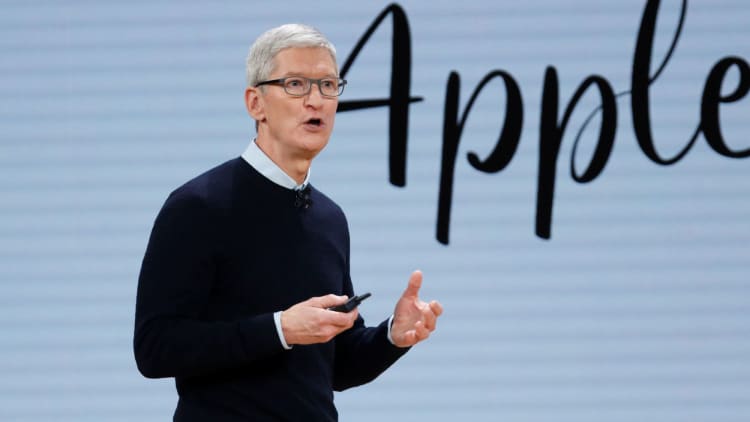
Wall Street rarely likes to talk about its mistakes, but Apple analysts are now admitting in notes to clients that they repeatedly messed up their analysis and forecasts for the smartphone maker.
Apple reported fiscal second-quarter earnings above expectations Tuesday, despite a slight miss in its iPhone unit sales number versus estimates. Investors are also relieved due to the company's much better than feared June quarter sales guidance range of $51.5 billion to $53.5 billion versus $51.61 billion expected by the Thomson Reuters consensus.
The company's stock closed up 4.4 percent Wednesday.
Apple's forecast came in contrast to Wall Street's concerns over iPhone demand in recent weeks. Analysts went into a "full panic" mode as several iPhone X component suppliers gave cautionary warnings over high-end smartphone demand.
The supply chain warnings spurred Morgan Stanley to significantly lower its June quarter iPhone estimate to 34 million from 40.5 million on April 20, suggesting overall iPhone demand weakness.
But Morgan Stanley's analyst admitted Wednesday she was way off on her projections.
"Weaker iPhone supplier results suggested meaningful downside in the June quarter which didn't come to fruition," analyst Katy Huberty wrote in note to clients. "While forecasted iPhone shipments of 39M units is lower than our 42M estimate a month ago, it's far better than our 34M estimate which reflected the weaker June quarter outlook from suppliers like TSMC and AMS."
Huberty reiterated her overweight rating and $200 price target for Apple shares, representing 18 percent upside from Tuesday's close.
Bank of America Merrill Lynch explained demand shifted to cheaper iPhones as revealed by Apple's lower-than-expected iPhone average selling price of $728 versus the $742 Wall Street consensus for its March quarter.
"We attribute the disconnect of iPhone unit guide from supply chain data points given lower iPhone X demand (focus of supply chain) transferred to higher iPhone 8/7 demand (hence lower adjusted ASP)," analyst Wamsi Mohan wrote in a note to clients Wednesday.
Mohan reiterated his buy rating on Apple shares and increased his price target for the company to $225 from $220.
Another analyst agreed that the declining average selling price is a sign consumers are buying more cheaper iPhones than expected.
"ASP came in light, down 9% q/q despite a full quarter of iPhone X availability, which echoes our concerns about mix weakening," BMO Capital Markets analyst Tim Long wrote in a note to clients Tuesday. "ASP of $728 missed both our/consensus expectations, reflecting our concern that iPhone X mix faded vs. earlier expectations."
Citi Research said the lower-than-expected ASP shows demand for the older iPhones is strong.
"While this could be viewed as a negative we note the fact that Apple sales came inline with expectations as did the iPhone units shows that the legacy iPhone are doing well in emerging markets," analyst Jim Suva wrote in a note to clients Wednesday.
But Suva admitted the widely anticipated iPhone X "super cycle" will not occur this year.
"There is No iPhone 'Super Cycle'. Apple units increased 3% year over year and while positive it stops short of investor expectations for a super cycle," he wrote. "About a year ago there was the belief that the iPhone X could create a super upgrade cycle and now it appears that the iPhone X is a great high end product but priced too high at $999 with memory configurations over $1,000 is aimed for the high end market and Apple is positioning its product in various price tiers with high, mid and lower end prices."
— CNBC's Michael Bloom contributed to this story.


